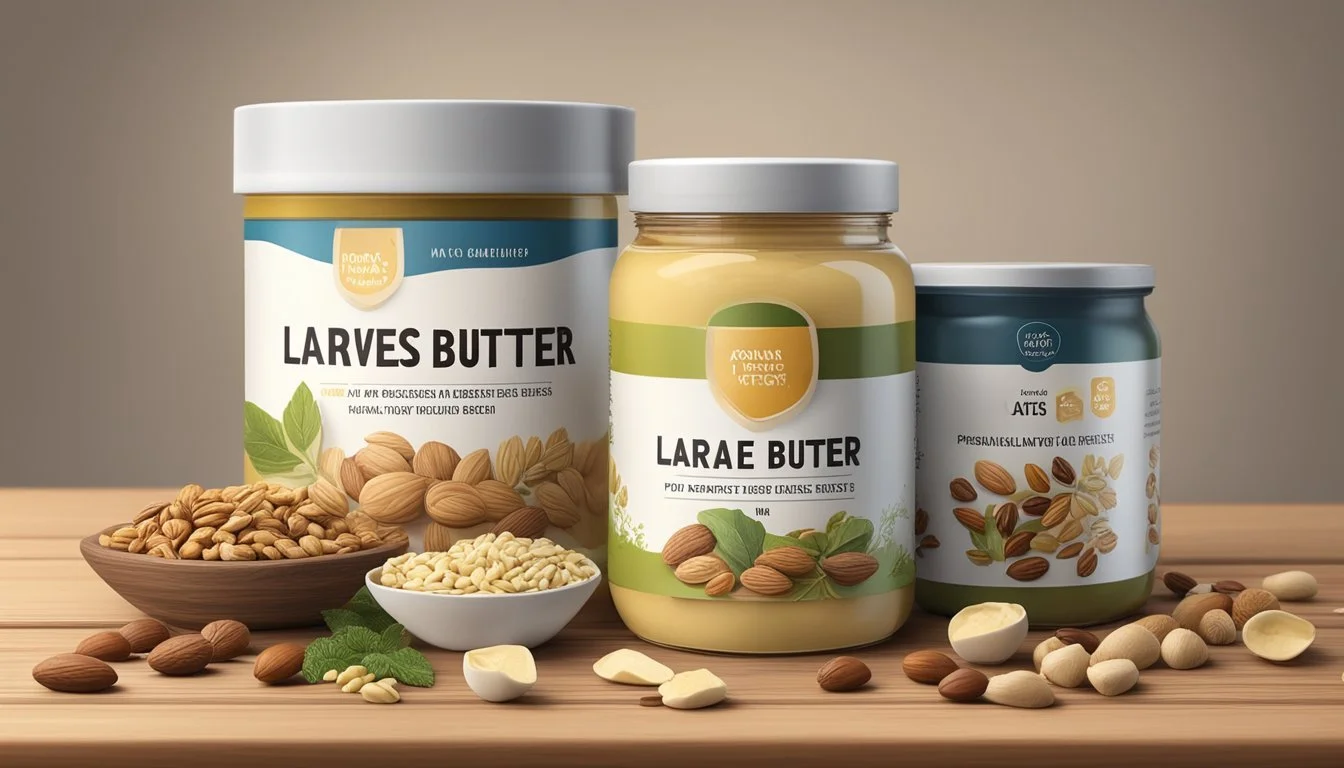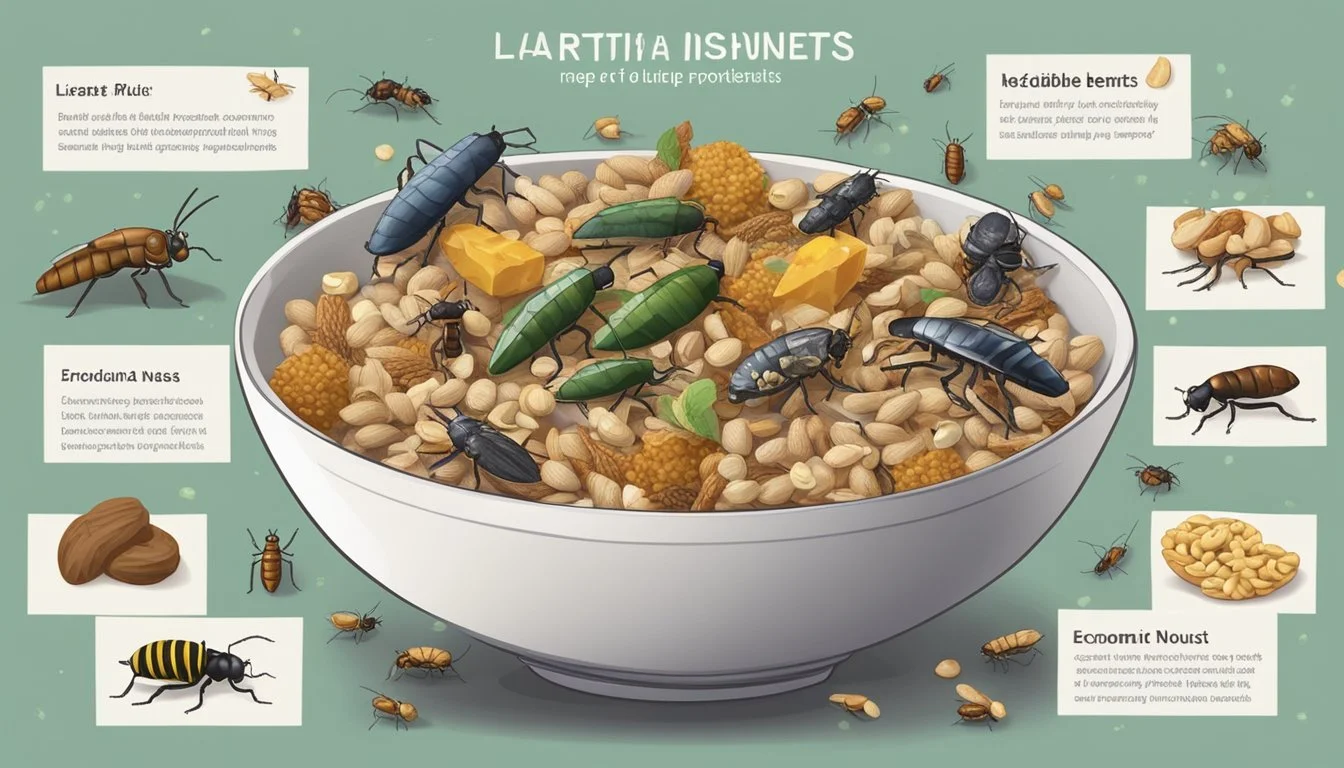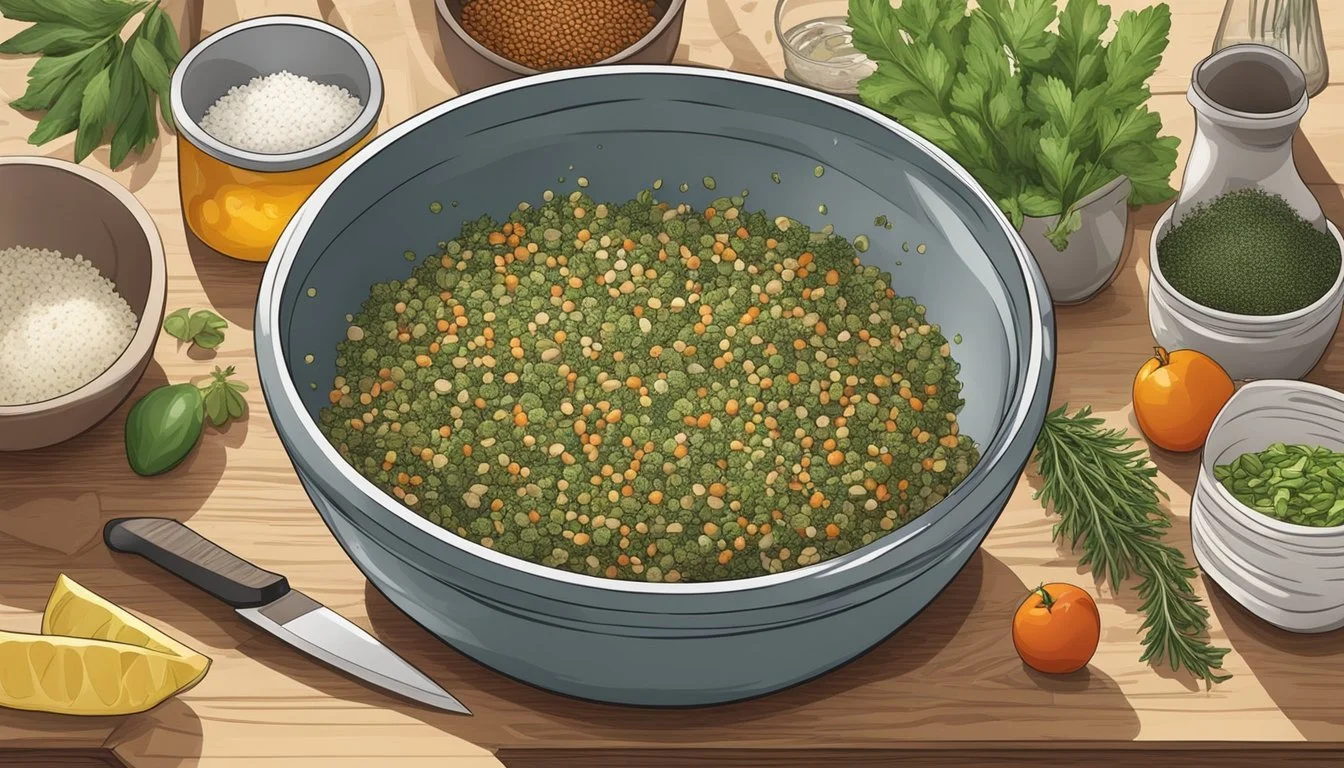Larvae Butter
Exploring the Nutritious African Protein Alternative
In recent years, the pursuit of sustainable and nutrient-rich food sources has led to innovative solutions addressing both nutritional needs and environmental concerns. One such innovation emerging from Africa is larvae butter, a product made from the larvae of the black soldier fly (Hermetia illucens). High in protein and other essential nutrients, larvae butter is not merely a culinary novelty but a practical alternative to traditional animal-based proteins. With a growing global population and increasing pressures on conventional livestock farming, alternative protein sources such as larvae butter are gaining traction for their lower environmental impact and potential to improve food security.
Derived from insects, a food source long tapped by many cultures around the world, larvae butter has a reduced ecological footprint compared to beef, pork, or poultry. It requires less land, water, and feed to produce and emits fewer greenhouse gases. In Africa, where malnutrition and food scarcity remain significant challenges, the utilization of insects like the black soldier fly larvae presents a promising avenue to enhance the protein supply. The effectiveness of larvae butter as a protein-rich alternative lies in its versatility; it is being incorporated into various products including spreads, biscuits, and sauces, exemplifying how traditional dietary practices can adapt and merge with modern nutritional science to foster resilience in food systems.
Understanding Larvae Butter
Larvae butter is a sustainable food innovation that utilizes insect protein to offer a nutritious alternative to traditional dairy butter. This product is not only rich in protein but also in essential minerals and good fats.
The Basics of Larvae Butter
Larvae butter is made from the larvae of insects such as black soldier flies. The larvae are soaked in water, blended to form a paste, and then processed to separate the fat content. This fat is used similarly to dairy butter and is known for its versatility in cooking and baking. It has been found that when used in food products, such as cake, consumers often do not notice a taste difference, especially when it constitutes a small percentage of the total fat content.
Nutritional Profile
Protein: Insect protein serves as the cornerstone of larvae butter's nutritional value. Edible insects are a complete source of protein, containing all nine essential amino acids required by the human body.
Minerals: Larvae butter is a significant source of essential minerals. For example, soldier termite flour, which is sometimes used in larvae butter, can enrich spreads with zinc (Zn) and iron (Fe), important for immune function and oxygen transport, respectively.
Protein: 5.5g per 100g
Iron (Fe): 1.75 mg per 100g
Zinc (Zn): 3.80 mg per 100g
Notably, the content of these nutrients in larvae butter can be far higher than that found in traditional spreads like honey, contributing to its nutritional appeal. Additionally, they often contain vitamins and good fats, making them not just a protein-rich food but a potential staple for a balanced diet.
Environmental and Agricultural Impacts
Larvae butter, primarily derived from black soldier fly larvae (BSFL), stands at the forefront of sustainable agriculture by offering a protein-rich alternative with significant environmental benefits. The cultivation and processing of this spread encompasses a smaller ecological footprint, addressing food security while mitigating climate change effects.
Sustainable Insect Farming
Insect farming, specifically that of BSFL, is highly efficient when compared to traditional livestock. Sustainability features prominently, with BSFL requiring significantly less land and water. They also thrive on organic waste, which helps reduce overall agricultural waste.
Land usage: Considerably lower compared to traditional livestock farming.
Water: Minimal water is needed for BSFL cultivation.
Feeding: BSFL can be fed on a variety of waste products.
Overcoming Food Security Challenges
BSFL-based products like larvae butter contribute to food security by providing a reliable protein source. They embody a solution to meet the protein demand of a growing population without straining traditional agricultural resources.
Protein production: Enhanced without expanding arable land.
Population growth: Can be sustainably supported with insect-based food alternatives.
Reducing Greenhouse Gas Emissions
The production of BSFL-based foods results in lower greenhouse gas emissions compared to traditional meat and dairy farming. By integrating BSFL into food systems, the agricultural sector can help combat climate change.
Greenhouse gases: Significantly less emitted by BSFL farms vs. traditional livestock farms.
Climate change mitigation: Reduced emissions help alleviate the agricultural impact on the environment.
Economic Aspects of Insect-Based Spreads
Insect-based spreads such as Larvae Butter are gaining recognition for their protein content and economic benefits. The industry offers a promising avenue for both market demand satisfaction and rural empowerment through innovative farming practices.
Market Demand and Export Potential
The market demand for protein-rich alternatives like insect-based spreads is on the rise. Insects such as mealworms and black soldier fly larvae, which are used to make Larvae Butter, have been acknowledged for their high protein, low cost production, and sustainability. The ability of these insects to convert organic waste into valuable protein creates economic efficiency. As more consumers seek sustainable and nutritious food options, the export potential for such products grows.
Cost-Effectiveness: Cultivating mealworms and black soldier fly larvae is economically viable due to low initial investment and operational costs.
Export Markets: There is a growing international interest, opening avenues for African producers to tap into global markets.
Empowering Rural Farmers
The insect farming industry can significantly impact rural areas by providing a source of income for farmers. The ease of farming insects like mealworms and black soldier fly larvae make it accessible for small-scale rural farmers.
Rural Areas Advantages:
Insects require less land and water than traditional livestock.
They can be raised on organic side streams, reducing waste and the cost of feed.
Income for Farmers:
With the right training and support, farmers can establish profitable insect farms.
Success in local markets can extend to exports, further increasing the economic benefits for rural communities.
Insect-based spreads such as Larvae Butter represent not only a nutritious spread option but also a transformative economic opportunity for the African continent, particularly in rural settings where accessibility and cost-effective solutions are critical.
Cultural Significance and Acceptance
This section explores the traditional role of entomophagy in African societies and the increasing global interest in insects as food.
Entomophagy in African Societies
Entomophagy, the practice of eating insects, is deeply rooted in African cultures. In South Africa and other parts of sub-Saharan Africa, larvae, such as mopane worms, are not just a food source but a delicacy that embodies a rich cultural heritage. For instance, in countries like Botswana, Zimbabwe, Zambia, and South Africa, the harvest and consumption of these caterpillars are interwoven with communal and family traditions. Similarly, West African nations such as Nigeria and Ghana recognize the nutritional importance of insects in local diets and partake in entomophagy as a customary dietary practice.
In the Democratic Republic of Congo, insects are an important element of traditional cuisines and contribute significantly to food security and livelihoods. Eating caterpillars, crickets, and other insects is a time-honored practice that connects people to their environment and ancestors.
Expanding Palates Globally
The acceptance of insect-based foods is gradually expanding beyond the borders of Africa as the global community seeks sustainable and protein-rich food sources. Insect consumption has become a subject of interest due to its low environmental impact and high nutritional value.
As the world faces challenges of food sustainability, more consumers are opening up to the idea of incorporating insects into their diet. This shift is seen in a variety of initiatives, from culinary experiments in high-end restaurants to the inclusion of insect-based products in grocery stores. Larvae butter, with its high protein content and versatility, could pave the way for more widespread global acceptance of entomophagy.
Health and Safety Considerations
When incorporating larvae butter as a protein-rich alternative, it is important to address health and safety considerations to ensure consumer well-being. Larvae, like any edible insects, must be sourced and processed under strict hygienic conditions to prevent contamination.
Allergen Information
Insects can cause allergic reactions, particularly in individuals with shellfish allergies.
Clear labeling on products containing larvae is crucial to inform consumers of potential allergens.
Safety Protocols
Harvesting: Insects should be harvested from safe, non-contaminated environments.
Processing: Facilities must adhere to food safety regulations to eliminate pathogens.
Cooking: Proper cooking methods reduce the risk of bacteria and enhance digestibility.
Concerning nutritional content, larvae butter is rich in:
Proteins: Essential for muscle repair and growth.
Fats: Particularly mono- and polyunsaturated fats, important for heart health.
Minerals: Such as iron and zinc, vital for various bodily functions.
Regulatory Compliance
Producers of larvae butter should comply with local and international food safety standards, which cover:
Ingredient sourcing
Production processes
Product testing
Packaging and distribution
In conclusion, while larvae butter offers several health benefits due to its high-quality protein and nutrients, producers and consumers must stay informed about the safety aspects to ensure a beneficial dietary addition.
Comparative Analysis With Other Proteins
Protein alternatives are becoming increasingly important in the global diet due to environmental, ethical, and health concerns. The following sections provide a detailed comparison between insect protein, specifically larvae butter, and traditional meat and fish sources, as well as its place in vegetarian and vegan diets.
Insect Protein versus Meat and Fish
Black soldier fly larvae, when processed into larvae butter, offer a high-protein content with a balanced amino acid profile. They rival traditional protein sources like beef, chicken, and fish. For example, larvae butter contains approximately 40-44% protein, which is comparable to beef (20-28% protein) and chicken (16-21% protein), and slightly less than most fish (18-25% protein). In terms of nutritional value, a study comparing black soldier fly larvae meal to soybean meal and fishmeal found that larvae meal provides a comparable protein quality and could potentially serve as a sustainable alternative.
Meat (Beef, Chicken)
Protein content: 16-28%
High in essential amino acids
Contains B vitamins and minerals
Fish
Protein content: 18-25%
Rich in omega-3 fatty acids
Source of vitamins D and B2
Larvae Butter (Insect Protein)
Protein content: 40-44%
Sustainable production
Could alleviate food security issues
Larvae Butter in Vegetarian and Vegan Diets
While larvae butter is an animal-derived protein, it presents an alternative for those considering environmentally sustainable sources of nutrients without relying on livestock. In vegetarian diets, which often include some animal products, larvae butter can be an innovative addition that diversifies sources of protein. Compared to pea protein, a popular plant-based protein with roughly 80% protein content, larvae butter offers a more environmentally friendly footprint. However, it may not be suitable for vegan diets due to its animal origin, but it is worth noting for its resource efficiency and could be considered by those in the vegetarian spectrum who are willing to expand their choices for the sake of sustainability.
Pea Protein (Vegetarian)
Protein content: ~80%
Plant-based
Allergen-friendly
Larvae Butter (Insect Protein)
Protein content: 40-44%
Lower environmental impact than livestock
An option for some vegetarian diets
Preparation and Culinary Uses
Larvae butter, recognized for its high protein content and unique texture, serves as a nutritious alternative to traditional spreads. This innovative ingredient is being incorporated into a variety of dishes, offering a new twist on familiar flavors.
Integrating Larvae Butter Into Dishes
Larvae butter can be seamlessly introduced into an array of culinary creations. It possesses a creamy texture that blends well with both hot and cold components of a meal. When added to soups, it can enhance the richness while contributing to a more satisfying protein intake. It's also suitable for combining with grains such as rice, where it can introduce an extra dimension of flavor and nutrition.
Soups: Stir in a spoonful for added creaminess.
Rice Dishes: Mix into cooked rice for enriched texture and taste.
Recipes and Serving Suggestions
The nutty and savory notes of larvae butter make it an excellent accompaniment to various recipes. Its adaptability allows cooks to experiment with different levels of salt and pepper to achieve the desired taste.
Spread on Toast: Apply a thin layer on toast for a protein-rich breakfast.
Vegetable Dip: Enhance the taste of raw or cooked vegetables.
Seasoning for Meats: Use as a rub for meats to infuse flavor and moisture.
Larvae butter can be the cornerstone of innovative cooking, providing a delicious and sustainable option for those seeking alternatives to conventional protein sources.
Innovation and Future Directions
Exploring the innovative progression of insect farming and its products like larvae butter is crucial in confronting future food security. This section delves into the advancements in insect farming techniques and the anticipated role of larvae butter in shaping upcoming food trends.
New Developments in Insect Farming
Recent advancements in insect farming have made the production of larvae-based products more sustainable and scalable. Innovations include the optimization of growth mediums, advances in automated harvesting technologies, and improved processing methods. Insect meal, produced from larvae, has seen significant enhancement in terms of nutritional quality and affordability. The industry has also made strides in the scale at which these operations can run, setting the stage for broader acceptance and integration into mainstream markets.
Growth Medium Optimization: Research into various organic substrates has increased larvae yield and nutritional content.
Automation: Emerging technologies facilitate mass production with systems that automatically feed and harvest the larvae.
Processing Improvements: Innovations in processing have led to more refined products, with larvae butter becoming a notable example of a value-added insect-derived food.
The Role of Larvae Butter in Future Food Trends
Larvae butter reflects an intersection of tradition and innovation, poised to become a staple in future food trends. Its high-protein content, coupled with sustainable production credentials, aligns with the growing consumer interest in food sources that are both nutritious and environmentally responsible.
Nutritional Appeal: With a protein-rich profile, larvae butter caters to health-conscious consumers and could feature as an ingredient in high-protein foods and snacks.
Sustainable Choice: The minimal environmental footprint of larvae butter positions it as an eco-friendly alternative to traditional dairy and animal fats.
By incorporating larvae butter into diverse food products such as sauces, spreads, and even protein powders, the industry showcases its potential to adapt and thrive within the shifting landscape of food trends.
Consumer Education and Outreach
Educating consumers about the benefits of larvae butter as a protein-rich alternative is essential to its market acceptance. One primary goal is to raise awareness of larvae butter’s nutritional value and sustainability. It's important to highlight that larvae are a source of high-quality protein, iron, zinc, and B vitamins, which contribute to healthy eating.
Strategies for Education and Outreach:
Workshops and Cooking Demos: They can present larvae butter as a versatile ingredient in familiar dishes, showcasing its use in a relatable way.
Informational Brochures: These materials should include nutritional comparisons with traditional protein sources, emphasizing health benefits.
School Programs: Incorporating lessons on sustainable protein into curriculums can instill knowledge from a young age.
Online Platforms:
Social Media Campaigns: They can portray larvae butter in a positive light and reach a wider audience.
Educational Videos: Animated formats can simplify complex information and make learning about larvae butter engaging.
In efforts to integrate larvae butter into daily diets, transparency about the source and processing of larval protein is crucial. Accurate labeling and detailed product information can build trust with the consumer.
Key Nutritional Information:
Nutrient: Protein, Importance: Muscle growth and repair
Nutrient: Iron, Importance: Oxygen transport in the blood
Nutrient: Zinc, Importance: Immune system function
Nutrient: B Vitamins, Importance: Energy metabolism and brain health
By employing these various educational efforts, acceptance of larvae butter may increase, supporting both local agriculture and broadening protein options in a growing market.










